I am freshly returned from my favourite woods in the world, the woods near Stonehenge that I know and love best.1 I have my ‘forest face’ back, softer, though perhaps grimier, than my ‘town face’. I have been coming here since 2015, according to the kit packing lists file on my laptop, though it seems like longer. Here, I gather chalk dug by badgers for my art and paints, pignuts for nibbling, chicken of the woods fungi for meals, hazel for carving box lids and gourd stoppers; in fact, everything I need to be more at home in the outdoors. This week I awoke to a wild chorus each day of song thrush, wren, chaffinch, blackcap, goldcrest, treecreeper, wood pigeon, robin, chiff chaff, blackbird, great tit, long tailed tit, spotted flycatcher, blue tit, siskin and marsh tit. Oh, and the odd rook and crow, of course. As the last light fell each night, muntjac deer barked in the woods and a tawny owl ‘whoo’ed me. Whoo, indeed.
Audio version
I was in the woods assisting my long-time bushcraft and traditional crafts teacher Joe O’Leary on his boot making course, mainly just helping out in the background with camp essentials as an extra pair of hands. To be surrounded by the green, amongst other people making things with their hands, is for me the greatest ‘holiday’. There was sadness too, of course. The UK’s ash trees are succumbing to ash die-back disease, and many are already dead and skeletal. Downhill from camp, the black lines of ash branches still poke starkly upwards but will soon fall, following the elms whose place they took in the 1960s. What will take the ash’s place here? Hazels, hollies, hawthorns and rowans are all springing up in the light gaps made in the canopy, but sycamore is probably the most suited to the ecological niche. Chestnut, yew and oak jostle too slowly to jump in, but will stretch and bulk out a little. I do mourn the ashes, but I salute the huge old ones by camp each day, they seem to be surviving well just now, thank goodness. I learned to make a bow from an ash stave, here, boxes of ash bark, too. Their feathery leaves high above me somehow make me feel like I am a sea creature under water, an impression also shared this week by my friend Fergus the forager.
Today I will share something I wrote about these woods a few years back, on returning from 5 days living wild, or at least as wild as you can get in a very busy little island, such as the UK mainland. It gives an impression of the woods I love and their richness. This piece first appeared, a little differently, with the original 2018 photos in Dark Mountain online a few years ago. Photos today come from this week, in nearby woods in the same forest.
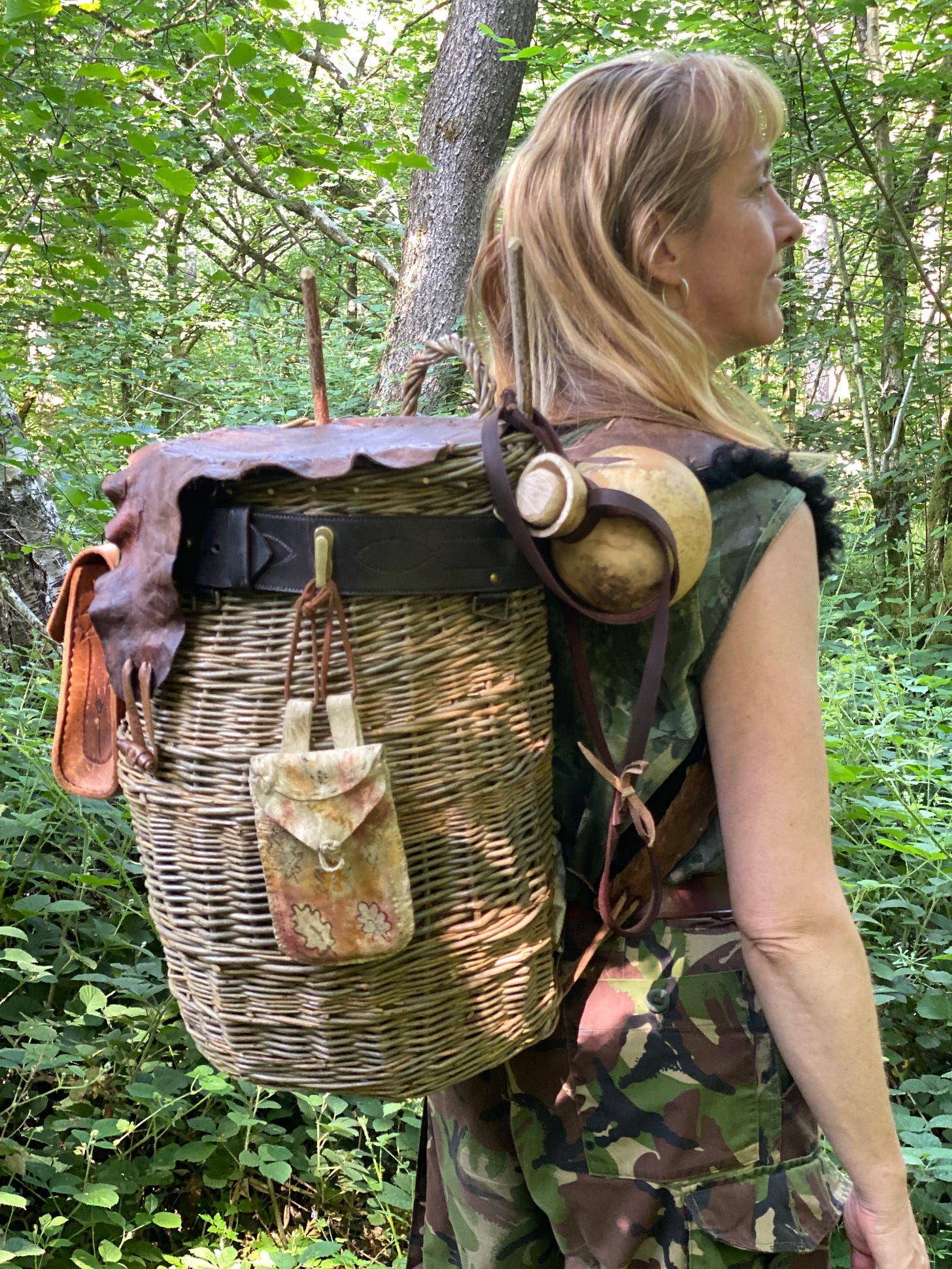
Questions for the woods
It is October 2018. Gralloched and chilled, the deer carcass hangs, now that we have pierced holes with the tip of our knives between hamstrings and femur, then pushed the stick through and hoisted it up into the tree on para cord. We start by cutting a circle in the skin at the knees and a slice down the inner thighs, then forelegs, to meet the belly cut. This creates the largest amount of useable skin for rawhide bow strings and fastenings. Then we get our fingernails under the hide and begin to pull downwards using body weight to help separate it from the adhering fascia. It is not like taking off a jumper, or skinning a rabbit, this beast clings to its hide even in death. There are tiny marks where ticks gnawed at it and the skin healed over, long striations where the fallow deer bolted under a barbed wire fence. There is the clean entry hole of the bullet ringed with black blood.
The skin lays fur-side down on the forest floor onto which we place the fillets as we cut them: tenderloin and shoulders, belly, back. Finally the haunches, which remain hanging side by side still joined at the pelvis, are divided on a tree stump with a sharp blow from a log onto the back of a sturdy blade, then placed in metal bowls, shared equally between the four of us. No one else seems to want the kidneys and liver. I can’t pass up this nutrition. I have eaten only rosehips and sloes so far today.
Knives, stick, cord put away, hands washed of blood, a billy can of illicit tea boiling on my campfire. Now I turn back to the hazel, knife at my belt, holding my basin of flesh, say my good evenings, and head back to the spot under a huge fallen oak, my home for the next four days and nights.
Each autumn I head to the woods to live for a while. For years this meant a wild camp or a bushcraft workshop. These days I do it formally, as both a retreat and a kind of challenge to improve my skills. There are four of us in the woods this week, all in our own little camps with varying amounts of skill and experience. We walked out at first light on empty stomachs from base camp to these woods, which are part of a huge private estate protected by gamekeepers; lucrative woods, yet also teeming with wildlife, largely unmolested and beautiful.
In his book ‘The Forest and The Field’, playwright and theatre-maker Chris Goode writes of this site of transformation. In European myth and story the liminal space where most challenges and tests occur is among trees, the forest is the site of the rite of passage. Without them, we humans are stuck in a hall of mirrors, bound to reflect only our man-made world and ideas. If we fail to protect the woods, we have one less route to the non-human. As the leaves inhale carbon dioxide and exhale oxygen, the humus of woods absorbs hubris and permits livelihood, to those who will lower themselves a little. Yet we who chance our arm in the forest must return with the knowledge we gain amongst the trees to ‘the field’, to ‘the village’. Do this, or risk staying forever in a false liminality, writes Goode, in an artificial deferment of community and responsibility, things which capitalism encourages us to avoid, so that it may better sell us expensive salves for our broken heartedness.
My life sometimes seems like one long annihilation of metaphor, or perhaps an enrichment of it, I am not yet sure. Living on a boat as I do, making natural art materials, and spending much time beneath trees, one is always learning the ropes, spinning a yarn, mulling things over… Somehow I have learned to trust the physical world and to know in my bones my small place within wider nature. I don’t have delusions of invincible capability. Yet it is something new and good to be a woman, approaching 50, menopausal, reeking of woodsmoke, standing here with my knife in hand fletching an atlatl dart so that it will fly true, and hit its mark.
( in your heart is a forest, go there )
There are many things to consider when picking a place to make camp, but after a few years exploring English woods one just gets a sense of it: stay clear of trees that are likely to fall in high winds, have firewood nearby, some shelter from the prevailing wind, not too far from the water supply. I walk around to see where the 3 chaps have settled. They are cutting beams, building lean-tos, raised sleeping platforms and walls. We each have with us a small folding saw, a fixed blade knife, a billy can, a length of cord, a headtorch, and apart from any personal medication, just the clothes we stand up in, all which must be made of natural materials, no Gore-Tex or shell layers. The challenge is not to survive, anyone could do that by curling up in bush and waiting. We are here to live well, to be at home in these woods. I go back towards the huge fallen oak that seems to have chosen me, and slide under the now horizontal trunk, weathered with age but still whole and strong. The space it leaves is tall enough for me to sit up if I keep my bed low. I pile up long sticks along the windward side and cover it with brash and bracken. Realising I am light-headed with hunger I make a fire with flint and steel, as I am not yet quick enough, or skilful enough, to make a bow-drill set on the fly, by next year I must be. Using the upturned lid of my billy can I fry a couple of bits of tenderloin and liver in a small glob of deer-fat. Hours go by thatching the shelter, but I neglect to construct a fire reflector, being waylaid by making a tripod on which to dry venison for jerky. Our instructor comes around before dark and points this out, and so I work until 11pm. Venison stew with nettles, dandelion leaves and root, silverweed root, plantain leaves, water. I only eat half, so I have something for the morning, I sleep well, waking when the fire is low, to build it up.
I have questions for the woods again. A year ago to the day (the famous ‘year and a day’ by lunar reckoning) I was sitting in a 20 foot circle carpeted with fallen needles, under a huge spruce tree in Transylvania. I was in Romania as one of two artists in residence invited by Andres Roberts and Paul Kingsnorth for the yearlong Dark Mountain course ‘Fire and Shadow’. On reaching the spot where I was to spend the next 27 hours, I dropped my bag, sat down on a spruce root, and looked up at the grand tree beside me. I asked myself, ‘I wonder if this spruce tree produces a sticky resin like the local Scots pine trees, back home.’ At that moment I put my hand down beside me, and immediately felt a large lump of spruce resin, which must have fallen not long before, as it was still malleable. Turning it over in my palm I jumped, as the distinct features of a very old woman’s face looked back at me. I am not a superstitious person, but this moment of pareidolia felt like a meeting. What was that line in the Lindwurm story we had heard told around the fire only two nights ago? ‘An old woman appeared from behind, or perhaps from within, the tree.’ The questions I brought to the woods that night were of how to deal with the fierce changes wrought by menopause, of how to reconnect with nature as I had in my youth, and how to be of help to someone dear to me, who was suffering great losses. I asked with a sincere heart under a full moon as practically and simply as I could.
In the old stories as in life, it turns out that the answer you ask for is rarely given in the form you expect.
Today the jerky is drying well on the tripod, it’s time to pick more greens, rosehips, sloes and dig a burdock root from the wood’s edge. I pick an inch-thick stick and cut a chisel-point on it with my knife, meet up with one of the lads and go for a foraging walk. Lars has come all the way from Norway, as to train in deciduous forests is a novelty for him. He teaches people outdoors skills for a living and has been diligently filming himself on his video camera for his YouTube channel. He has already made a yew bow and some hazel arrows as we all have to make some kind of projectile weapon, to retrospectively earn our venison rations2 with target practice on the final morning of camp. I will make an atlatl tomorrow, a kind of modified throwing spear. We dig roots in hot sunshine, nibbling at warm berries, which have all become very sweet in the late heatwave. Lars digs an enormous labyrinthine starchy root. My root is big enough for me. Later, with the burdock softened in todays version of the stew, my body now accustomed to hunger and work without carbohydrates, the sugars go straight to my head and I lie back on one of my host-tree’s wide branches, and look up at the Milky Way humming to life above the Great Ridge Woods. I once read that an oak tree like this supports more living beings in its ‘death’ than most other species do in life. I ask the tree, silently, is my burning-time over for now? Can I settle my heart and tend to my hearth? How can I best work with nature, both the inner and outer wilds, not to tame them, but also not to get eaten?
Broken
In the summer of 2001, on tour with my band, a disc in my spine ruptured and herniated, pressing on a nerve, and began to paralyse me from the waist down. By the time the excruciating pain lifted somewhat, two days after my wedding day, I hobbled round to my doctor to take her a piece of wedding cake. I mentioned the numbness and she immediately tested the feeling in my limbs using a pin. By the evening I was in an MRI scanner, the next morning on the operating table, (the disc was successfully removed and placed in a jar of formaldehyde for me, as the surgeon had learned I was interested in anatomy. It looked like a torn old two-pence-piece-sized disc of gristle).3 During my recovery the band decamped to The Lake District, a bad idea during the widespread foot-and-mouth disease outbreak, as many hills were off-limits. We walked around Derwent Water, and as the guys swum, I limped off to answer a call of nature under a spreading oak tree. I wondered, ‘Do ceps and bay boletus fungi grow here under the oaks, they were supposed to grow hereabouts…’ As I squatted, trousers round my ankles, all around me I could see ceps, bay boletes, and other fungi which I had not seen from above when walking in, despite a decade of foraging experience. Getting low, humble, even broken, allowed me to see what I had been missing, what was there all along. The light seemed for a long moment to illuminate each thing from within, there was a crispness to the edges of everything in my field of vision. I felt part of nature in a way I hadn’t since my childhood. By the time I stood up and fastened my belt the feeling had gone, lost in analysis and inspection by my mind. It took me over ten years to remember how to return to this way of being.4
To Live
It’s the morning of the fourth day in camp, tomorrow we walk back to a fry-up breakfast and debrief with my long-time bushcraft and wilderness skills instructor Joe O’Leary. In the 1990s and early 21st Century, ‘Bushcraft’ was a booming business in the UK, with thousands of people heading off to the woods to train with famous instructors from TV, and to get expensively kitted-out. Friends who still teach these skills say the last few years have seen a dramatic change: most people want instant results, take photos constantly to post to their social media in real-time, and want to opt-out of anything physically demanding, or lengthy. Ironically, books about ancestral skills and the outdoor life in general are selling better than ever. One friend sees his future in writing more books about his skills, rather than passing them on in person.
We stand 30 feet in front of a target. One of the crew, a heart surgeon, had to leave early to operate urgently on a young girl. His camp was left immaculate; raised bed, thick thatch. If you came across it in the woods, you would know something of the attitude and skill of the man who made it. Joe has brought us each a potato, a Baby-bel cheese, a Snickers bar, a stock cube and a banana, which we get to earn by hitting the target. I would normally only choose the potato from all these things in a shop, but my stomach says, ‘shoot straight!’ and as we take our turns, we earn our treats. It takes me a while longer than the guys with bows and arrows, but the spear flies true and the pheasant feather and deer sinew fletching holds up well. Afterwards we take a tour of each other’s camps, appreciating the different skillsets and features. Mine is the one camp without straight lines. It appears I am the only woman to have completed this ‘Hunter Gatherer Challenge’ in all the years Joe has run it.5 The rest of the day is free to relax and just enjoy the woods. I make a basket from hazel and ivy and go foraging with it for greens to add to the pot.
Things pass between me and the fallen oak tree. A few things get buried. Lying under the red-brown trunk on my last night, I ask myself just how many life-forms this tree still supports. Little black beetles scurry away, a spider settles in in a crack by my head. There is a word of carved graffiti above my face, where only another recumbent human could have placed it. I think it says ‘- Clive’, or ‘- Olive’ or perhaps ‘to live’. I take a piece of chalk I gathered lower down the woods, wondering what to add. Who might one day lie here, and find someone had left greetings for them? Fox, owl, stag beetle, human?
This week’s good things: The last piece in the Our Dark Materials series for Dark Mountain features artist Joumana Medlej. We were in conversation about the sacred urge to make art, how natural materials temper and enrich us, and how she bears witness to the unmaking of the world. Do subscribe to her Substack Caravanserai, it is a joy.
And today, at last, my book ‘Found and Ground’ is officially published by Search Press. You can buy it directly from them in UK or USA, or wherever you like to get your print or e-books. If you want signed copies, you can email me via my website. I am travelling to Schumacher College to teach this week with my Dark Mountain colleagues, so there’s no time yet to sit back and celebrate. But I will on Friday night!
This week’s title is from Riddley Walker by Russel Hoban, one of my all-time favourite books. If you haven’t read it yet, you are in for a treat.
It is illegal to hunt with a bow and arrow, spear, or crossbow in the UK, so this deer was shot legally by a local professional huntsman.
I gave it to my friend Mark Francis, for his natural history curio collection.
But now this feeling is present more often than not, for reasons which are some of the ongoing subjects of this Substack…


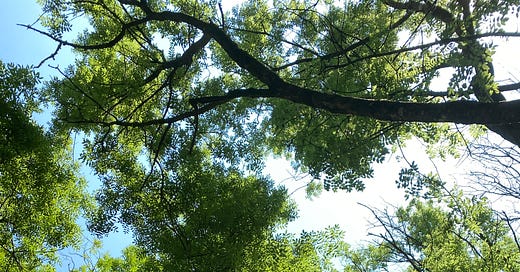



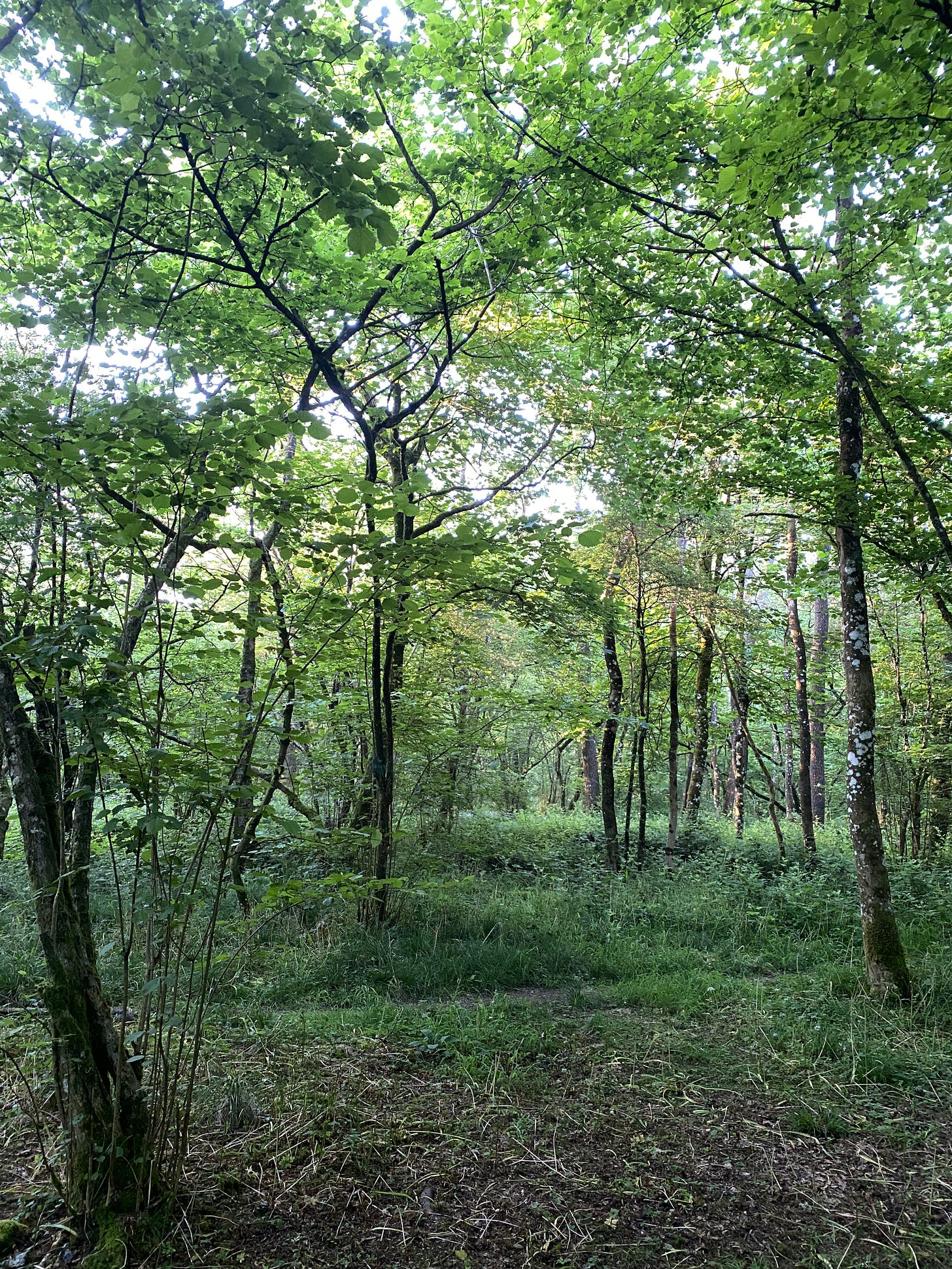
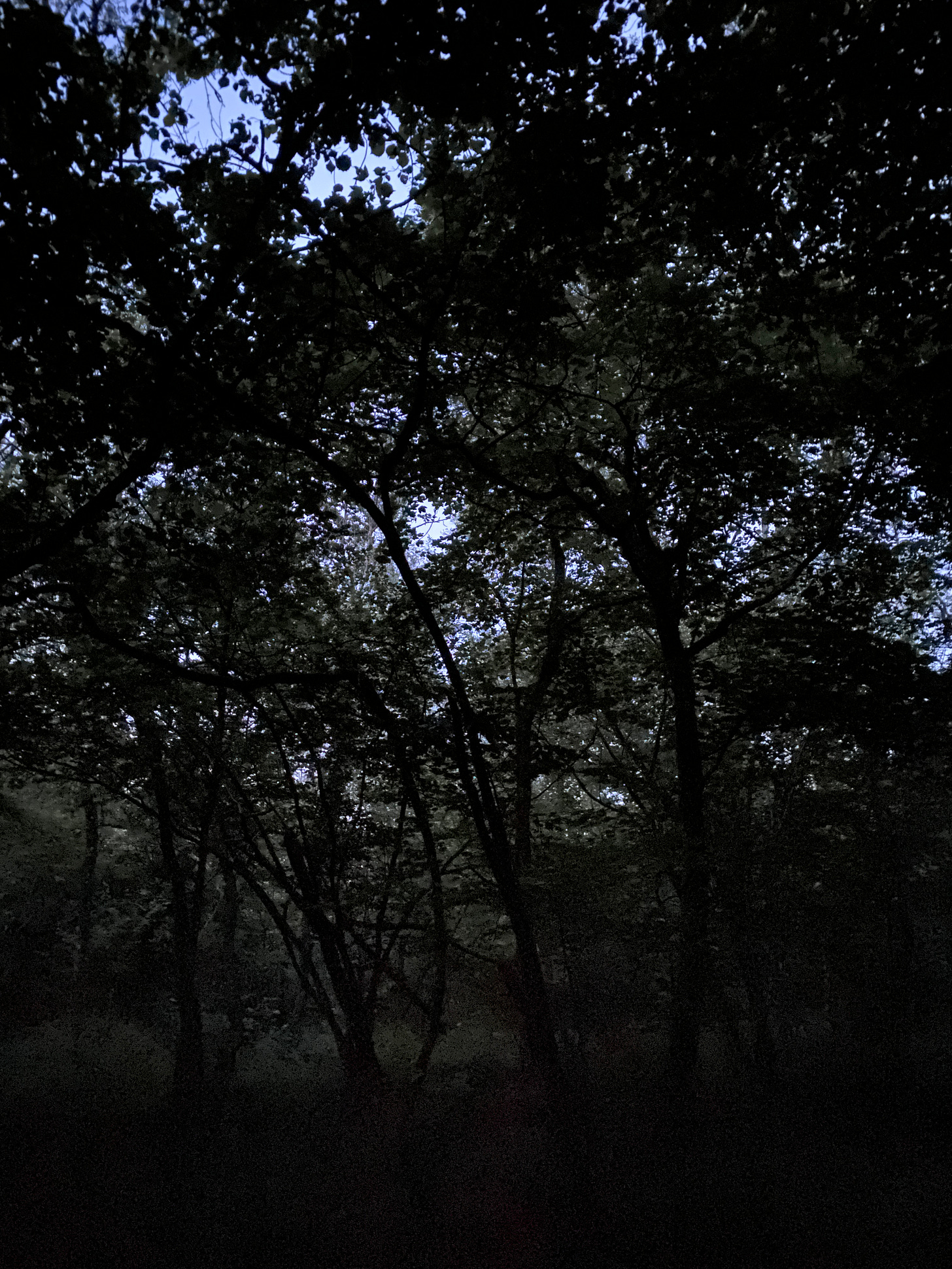
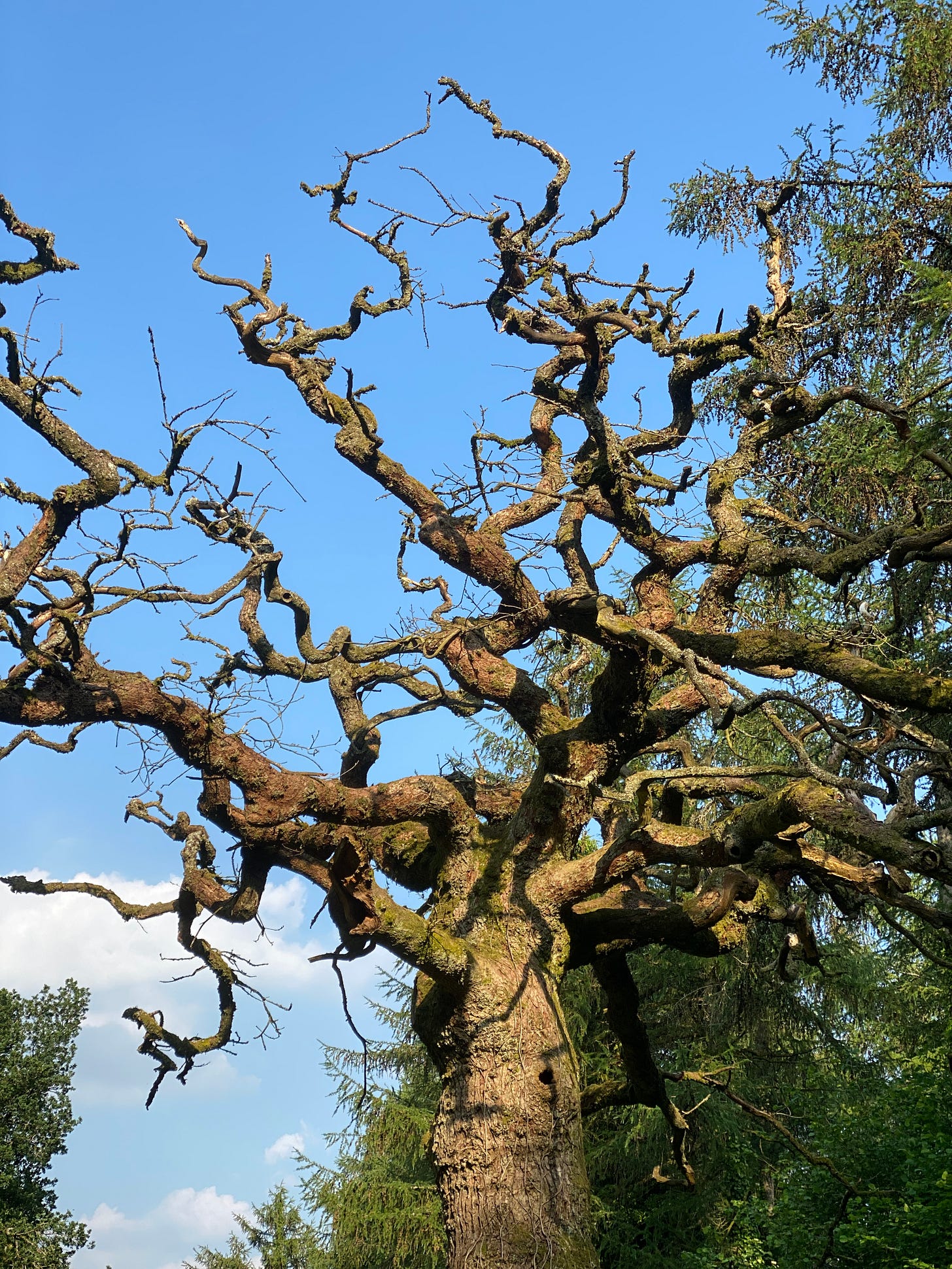

Belated congrats! I'm behind on emails and reading. This was a fascinating read...
Thanks, I can feel my whole being slowing down while tuning in to your way....
Your awareness of the energetic reality is soothing and makes me lean in even more. Like you say, now more often than not I can allow myself to be here.